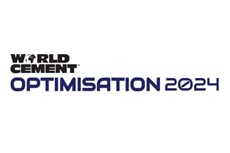Weighing up your options
Published by David Bizley,
Editor
World Cement,
Dr. Dominik Aufderheide and Dr. Luigi Di Matteo, DI MATTEO Group, provide an overview of state-of-the-art conveying concepts for the continuous feeding of bulk materials.
For the continuous mechanical conveying of bulk materials, numerous different handling principles and machines are available for usage in a wide range of different application fields and for all kinds of bulk materials. Besides the general decision regarding whether a certain conveying strategy is applicable for a specific case or not, it is also essential to evaluate different drive concepts in terms of efficiency and variability.
This article provides a brief overview of different bulk material conveying systems and compares different concepts according to a pre-defined set of criteria. Especially complex conveying routes require the usage of adequate machines. A recent example for the installation of a pipe conveyor shows the potential of this kind of transport system.
One major aspect in each and every cement manufacturing process and other related industries, such as the lime industry, mining, etc., is the efficient transport of all kinds of bulk materials by means of continuous conveying systems. Due to the wide range of typical application fields, the characteristic properties of such installations vary enormously between different projects, and therefore numerous different conveying concepts are available today, where the vast majority of all installed conveyors are following either a mechanical or pneumatic transport principle. This article focuses mainly on mechanical conveying systems and associated drive concepts, while providing an introduction to pneumatic conveying.
A typical problem for all designers and engineers is the proper selection of adequate conveying principles for a certain application field. For this, a general classification of different conveying systems is proposed in this article, which is used in order to provide a comparison matrix between different conveying concepts based on specific selection criteria. Furthermore, a generalised model for a continuous mechanical conveying system is introduced, where the main physical entities and functional relations are defined. Since each conveyor is always a mechatronic system which consists of a mechanical conveying principle and (in most cases) an electrical drive unit, the article also provides an overview of actual drive concepts and compares their main characteristics. Here, especially the operation with variable frequency drives will be considered. In this context, the constant flux mode of operation is introduced for the realisation of conveyors with an extended speed range.
Found this article interesting? You can read the full version in the November issue of World Cement.
To register for a free trial, click here!
Read the article online at: https://www.worldcement.com/special-reports/19112021/weighing-up-your-options/
You might also like
Rohrdorfer starts ethylene production from carbon dioxide
Following a test phase, production is to be scaled up to an industrial scale, thereby establishing a seamless CO2 circular economy.


